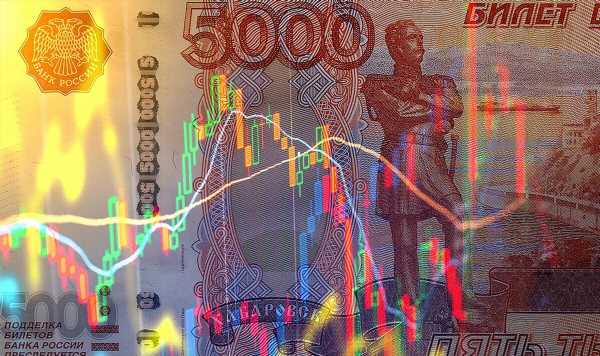Hundreds of Russian troops killed on Dzharylhach Island
The Russian Ruble dropped to a 17-month low exchange rate after weeks of continuous slides against the US Dollar, and the Euro experienced a 64 percent drop in its value over the past calendar year.
On Wednesday, the Ruble dropped nearly two percent against the Euro, with the currency now trading at 103 Rubles to the Euro.
The widespread sanctions levelled at Russia since the invasion, coupled with investors’ jitters following weeks of repeated attacks against Russian targets are believed to have contributed to the dramatic drop.
Ukraine has carried out several overnight drone strikes on Moscow this week, with the financial district being one of the Ukrainian forces’ main targets.
The attacks have been fuelling concerns about the Russian economy further compounded by questions about the Ministry of Finance’s ability to keep up with an exchange rate close to 90 against the Dollar.
READ MORE: Wagner army vehicles spotted at Belarus base as fears over attack on NATO grow
In recent weeks, Moscow has had to sell off billions of foreign currency reserves to cover the losses in oil revenue.
Only this week, the Russian Central Bank announced plans to sharply raise interests rates to 9.5 percent in a desperate attempt to battle inflation.
Russians have increasingly been lamenting the loss of purchase power of the Ruble, reporting their money now buys half of goods it did earlier in the year.
Indiana University economist Dr Volodymyr Lugovskyy argued the current issues are only going to get worse as he warned of a potential “free fall” in the coming weeks.
Dr Lugovskyy forecast a “coming hyperinflation with prices increasing and wages not being adjusting,” causing the price of goods and services to soar further.
DON’T MISS:
Putin puppets scared Trump indictment opens door to all-out war with Washington[ANALYSIS]
Putin’s only frontline offensive falling apart despite 100k troops and 800 tanks[EXCLUSIVE]
Moscow plot obliterated as Ukraine shoots down 15 drones heading for Kyiv[INSIGHT]
We use your sign-up to provide content in ways you’ve consented to and to improve our understanding of you. This may include adverts from us and 3rd parties based on our understanding. You can unsubscribe at any time. More info
Despite the dire prospects, Reuters earlier this year noted Russia had recorded its lowest employment rate since the collapse of the Soviet Union.
Vladimir Putin and his men have been plumping up the economy since the start of the Ukrainian invasion, and a large number of Russians have been coopted in the actual fighting at the front in Ukraine or in the production of military equipment.
But speaking to the Kyiv Post, Dr Lugovskyy argued the signs now suggest the Ruble will “keep falling.”
He said: “If traders start believing the RMoF stops supporting it, it will fall very fast – very fast.”
The economist also added that should the scenario come to pass, “the exchange rate and Ruble might be then in free fall.”
Other experts however have suggested the drop was also the result of the tax period coming to an end.
An analyst at Alfa Investments told business daily RBK: “At the end of the month, exporters sell forex earnings to pay taxes, and this supports the Ruble.
“And when this period ends (usually on the 28th of each month), the ruble traditionally weakens.”
Follow our social media accounts here on facebook.com/ExpressUSNews and @expressusnews
Source: Read Full Article
-
Life in the shadow of Man Utd as locals watch fans pee up walls and dump litter
-
Brit cop banned from police after texting domestic abuse victim she was ‘fit’
-
Thornton sues “forever chemicals” producers, alleging water contamination
-
Victoria’s Secret worker touches ‘biggest poop’ by customer in changing rooms
-
Hayden Panettiere's family reveal brother 'died from enlarged heart'



